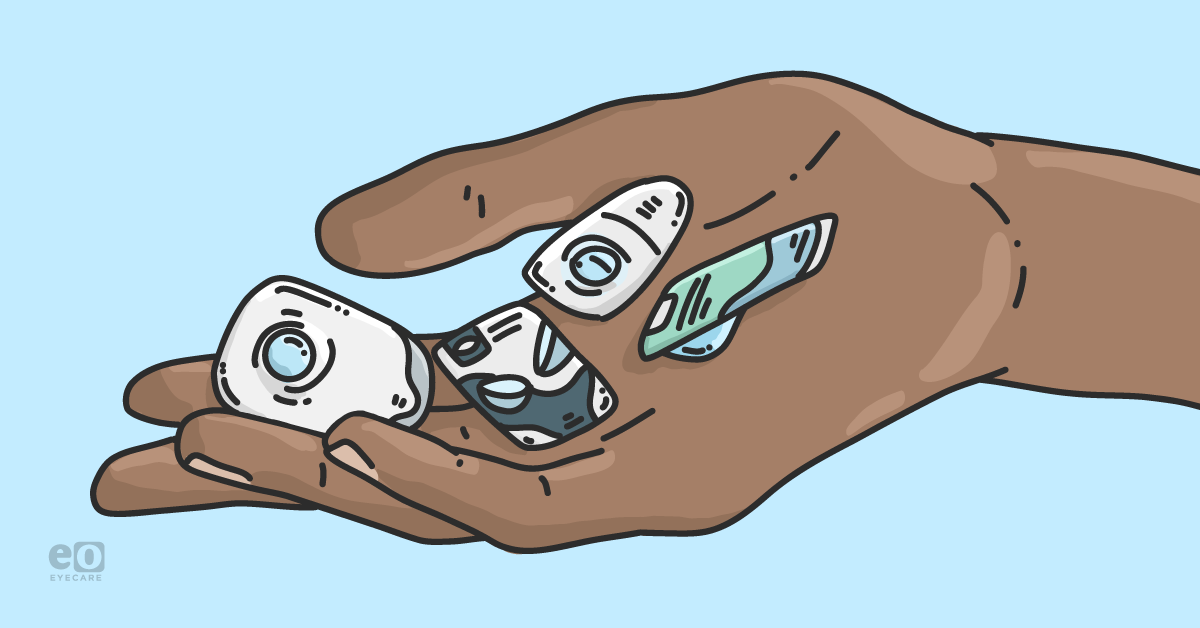When I’m prescribing
soft contact lenses, I always consider a daily disposable option first. Daily options result in less complications,
1-3 better compliance,
4-6 and improved overall comfort.
7For the patient, daily disposable options also mean more convenient, hassle-free contact lenses wear. Just a few years ago, daily disposable options may have been reserved for patients with unique comfort struggles, straightforward prescriptions, and/or seemingly limitless budgets.
In today’s contact lens market, however, there are multiple
daily disposable options for most patients’ prescriptions and budgets. In 2023, it is easier than ever to default to a daily.
Factors to consider when selecting a daily disposable contact lens
The expansion of daily disposable soft contact lens options has allowed eyecare providers (ECPs) to offer new levels of comfort, convenience, and ocular health to their patients. This explosion in options, however, can seem overwhelming.
Read on for tips on what to ponder when choosing a daily disposable:
Parameter availability
In today’s market, most daily disposable brands include
spherical, toric, and multifocal parameter options. This means a fitter can usually address spherical, astigmatic, and presbyopic needs within the same brand. For some, however, there may only be a combination of spherical/multifocal or spherical/toric parameter options.
This isn’t a deal breaker for fitting a patient, but being aware of those types of limitations at the start of the fit can help you avoid troubleshooting issues down the line. While parameter availability for things like high hyperopic or myopic powers, cylinder magnitude, and axis availability have expanded and increased in recent years, not every brand offers parameter perks like extra high plus or minus powers and/or cylinder magnitudes above 2.25 diopters.
When patients with these unique parameter needs arise, utilizing searchable contact lens parameter resources like
Tyler’s Quarterly,
odspecs.com, and
EyeDock can help to quickly identify daily disposable brands that will meet that patient’s needs.
Once a few of these patients with unique parameter needs have been encountered, it is easy to remember what brand solutions work best when those needs arise again in the future.
Cost considerations
A patient’s first question when offered to switch to or initiate a daily disposable modality is often, “How much do they cost?” As more daily disposable brand options have become available, we have started to see a much wider range of price points. For most manufacturers, excellent options exist at both entry-level and premium price points.
Most major soft contact lens manufacturers offer at least two brand options for daily disposables. When comparing the prices of those options within a manufacturer’s portfolio, you can often identify premium products and at least one more cost-effective option.
This means that if starting with a premium product is not realistic for the patient from a cost perspective, choosing a more approachable, entry-level price point lens will still result in successful daily disposable wear.
Comfort comparisons between daily disposable contact lenses
Cost conversations frequently coincide with
comfort considerations in daily disposable contact lens wear. When considering cost, it is important first to acknowledge the costs a daily disposable wearer of any brand will not incur.
Compared to wearers of
monthly or biweekly replacement lenses, daily disposable wearers do not have to purchase lens accessories like contact lens solutions and cases—resulting in significant savings over the course of a year.
Products that have more sophisticated technology to target and optimize the lens’ interaction with the tear film and ocular surface are often more expensive than their predecessors. This doesn’t mean, however, that a premium lens that offers unmatched comfort is not an option for a patient on a budget.
When comfort is a priority for a patient, it is helpful to let them experience the comfort difference between an entry-level option and a more premium product. Allow the patient to take home trials of both brands and try them out in their everyday life. If the premium brand provides better comfort, experiencing that in the real world will help justify and rationalize the cost.
If the patient finds no significant comfort difference between the brands, then they can enjoy those cost savings. Either way, good comfort is achieved and the patient is confident in their investment.
Special features
As new daily disposable options are developed, they are accompanied by special features that differentiate them from similar brands in the category. This can make the fitting process more interesting and personalized to the patient. For every daily disposable, comfort is a primary feature target.
Most new products offer innovative technologies that optimize how the lens integrates with the ocular surface. Additionally, comfort isn’t the only upgraded feature patients can enjoy in daily disposable designs; newer daily disposable options also offer advanced optical designs and other upgraded features.
Being aware of these unique features can allow an ECP to elevate the daily disposable fitting experience beyond just comfort.
Conclusion
As the contact lens market continues to evolve and progress, daily disposable options should be the foundation of an ECP’s soft contact lens prescriptions.
